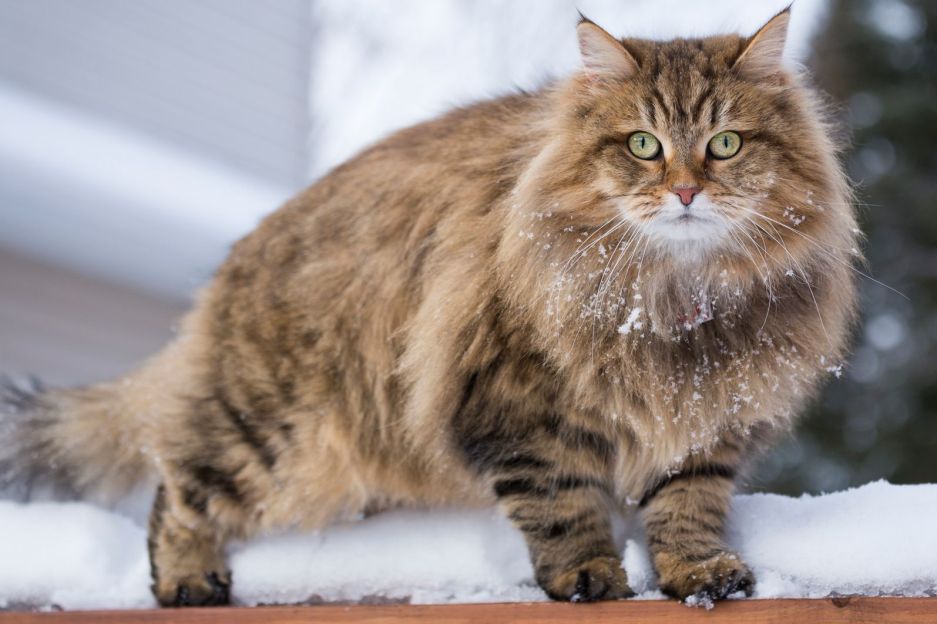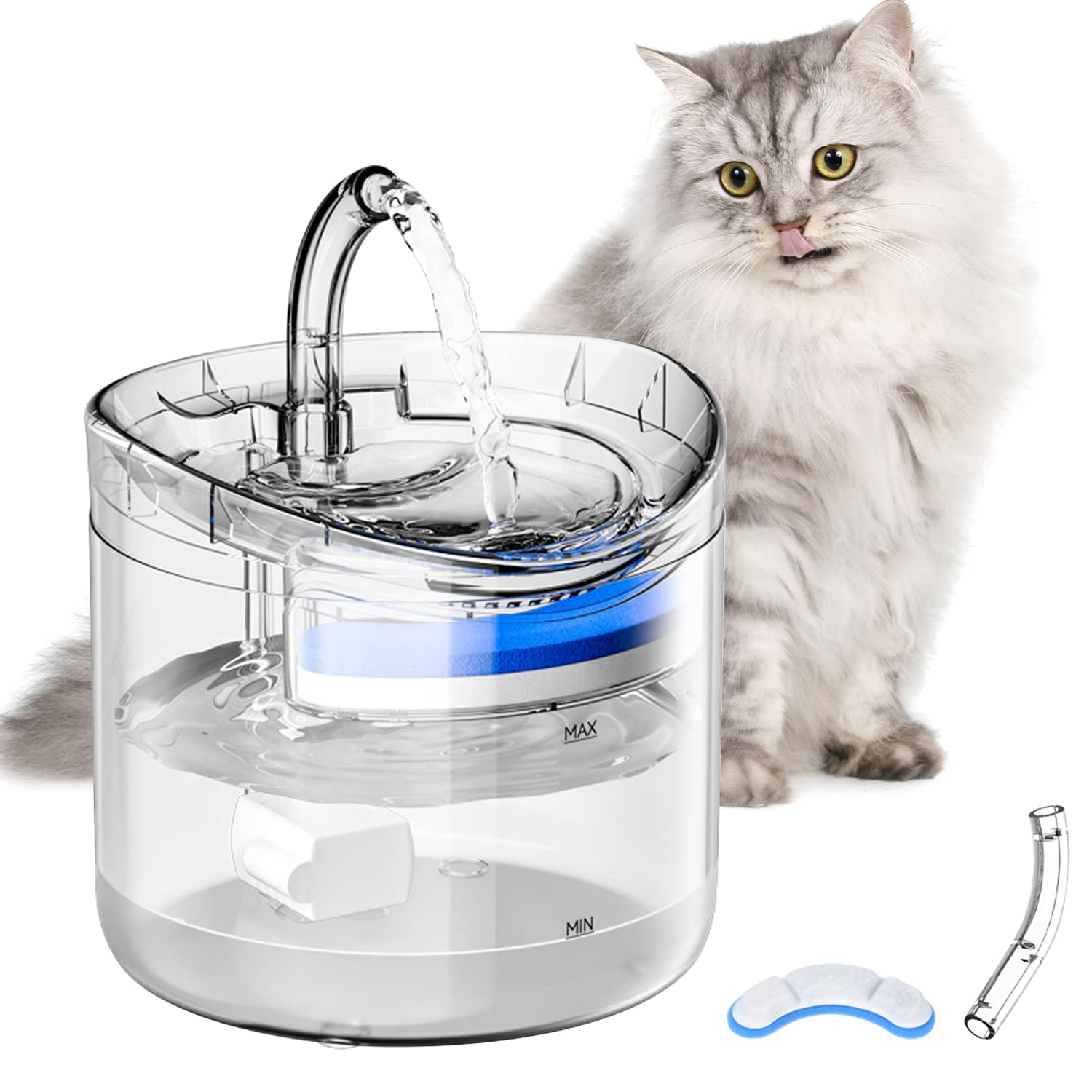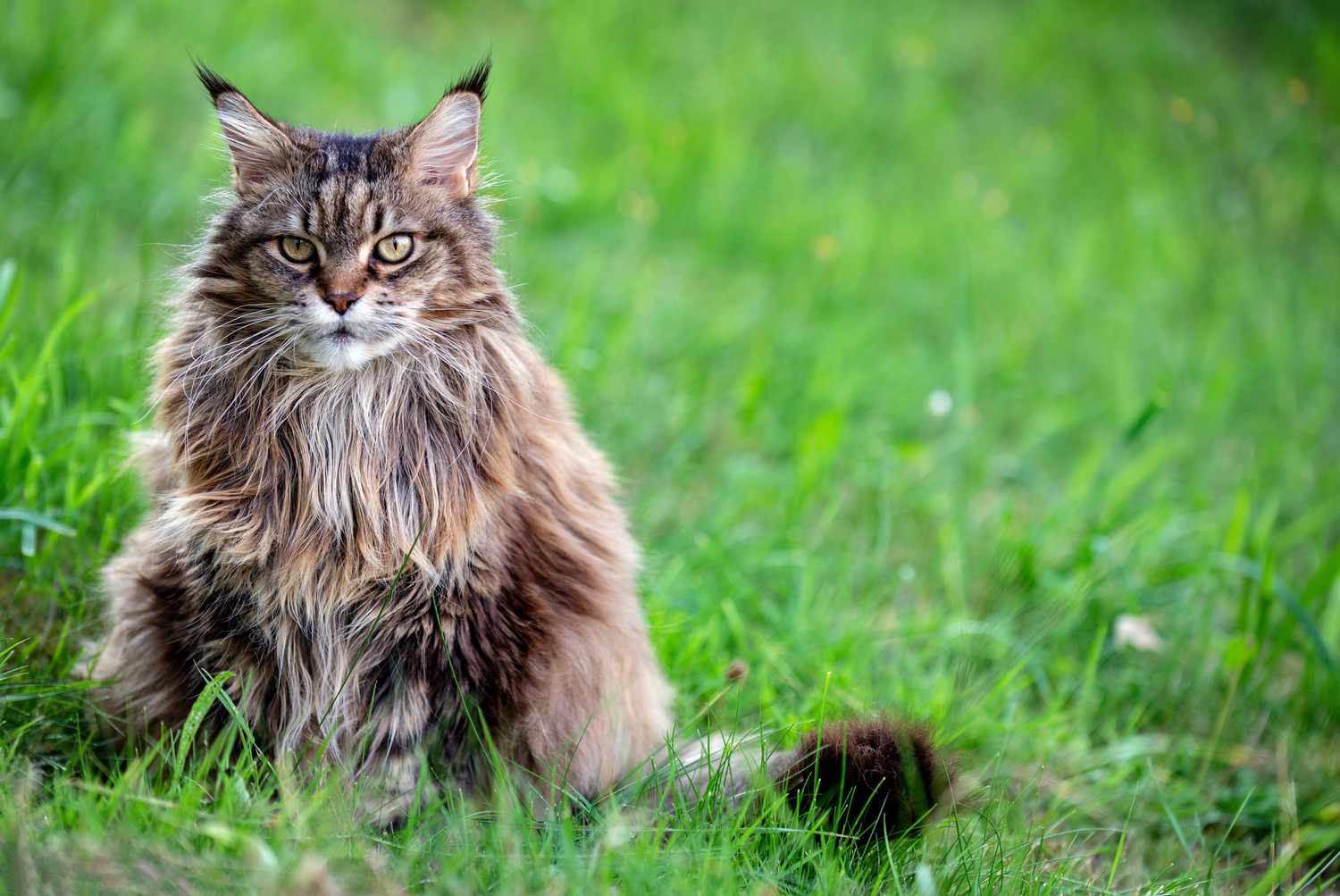Felines make delightful pets for many thanks to their playful personalities, affectionate natures and graceful beauty. However, over 10% of the population suffers from allergies to cats, making cat ownership an unviable option for them.
One breed that is sometimes marketed by breeders and rescues as hypoallergenic is the visually striking Siberian cat. It is distinguished by its long triple coat, golden eyes and ear tufts. Their moderately shedding, thick fur gives them the appearance of hypoallergenic potential.
But do Siberian cats truly deserve their hypoallergenic reputation when examined closer? How do they compare medically to other breeds touted for allergy tolerance, like the Russian Blue and Balinese? Can an allergy sufferer safely live with a Siberian cat with minimal reaction through precautions? Let’s have a look.
In This Article
Are Siberian Cats Hypoallergenic?
Siberian cats are often marketed as “hypoallergenic” but no cat breed is truly hypoallergenic. However, Siberians tend to produce lower levels of Fel d 1, the protein in cat saliva and skin that is the primary allergen for people allergic to cats. A few things to note about Siberian cats and allergies:
- Siberian cats tend to produce less Fel d 1 than other cat breeds, but the amount can vary from cat to cat. No guarantees an individual Siberian will have low enough Fel d 1 for someone with cat allergies.
- Exposure and reactions can still build up over time even with low Fel d 1 production. Someone moderately or severely allergic may still react over repeated/prolonged exposure.
- Other allergenic proteins exist beyond Fel d 1 that can trigger allergies to some degree. No cat is 100% non-allergenic.
- Those seriously allergic should spend ample time around the individual cat before adopting to gauge their personal reaction. Start with limited/supervised contact.
 So while Siberian cats may help mitigate allergies better than other breeds, they cannot be considered truly “hypoallergenic.” Any cat could still trigger allergies. Their relatively lower Fel d 1 levels can make them a better option for some allergy sufferers, but reactions can still occur. Proper introductions and assessments are advised for those with cat allergies looking into Siberian cats.
So while Siberian cats may help mitigate allergies better than other breeds, they cannot be considered truly “hypoallergenic.” Any cat could still trigger allergies. Their relatively lower Fel d 1 levels can make them a better option for some allergy sufferers, but reactions can still occur. Proper introductions and assessments are advised for those with cat allergies looking into Siberian cats.
Tips for Allergy Sufferers Living With a Siberian Cat
Personal Protection
Allergy sufferers should take steps to avoid direct exposure to allergens from their Siberian cat. This involves wearing an N95 face mask that fits properly and snugly when in close contact with your cat, such as while playing, petting or grooming them. Wash your hands immediately after touching your cat to remove any stray saliva or dander that may have transferred onto your skin. You can also have designated cat-free zones in your house cordoned off using baby gates or a closed door where your Siberian is not allowed access. These pet-free spaces allow you a safe haven away from allergens. Changing your clothes and taking a shower after prolonged exposure to your cat is another way to prevent allergens from accumulating on your body. Consider taking allergy medication like oral antihistamines daily to prevent and reduce allergy symptoms from exposure to your Siberian.
Home Cleanliness
Keeping your home scrupulously clean is vital. Use a vacuum with a HEPA filter 2-3 times per week on floors and upholstery to remove all traces of airborne cat hair and dander. Hard surfaces like countertops and tables should be thoroughly dusted every 2-3 days using a microfiber cloth that attracts and traps particles like pollen and cat dander. Frequently wash any fabric items around the house that may gather allergens like curtains, blankets or your Siberian’s beds. Use hot water to kill dust mites and fully remove cat hair or dander that’s stuck on. Consider changing the air filters on home ventilation systems every 2 months, or getting free-standing air purifiers that use HEPA filters to remove airborne allergens. Controlling humidity can also discourage dust mite growth.
Cat Grooming
Regularly groom your Siberian cat to control loose hair and dander. A daily brushing helps lift dirt and distribute natural skin oils that give their fur condition. Use a stainless steel comb to help detangle any matted fur where hair and dander easily builds up. Bathe your Siberian every 6-8 weeks using a vet-approved, hypoallergenic cat shampoo. Bathing washes off the Fel D1 allergen from skin and hair that causes reactions in humans. Always thoroughly dry your cat afterwards. Clipping your cat’s nails regularly minimizes skin damage from scratching. Ask your vet to show you proper technique. Getting occasional veterinary dental cleanings for your cat can also greatly cut down on pet-related allergens found in saliva. Always wipe your cat’s paws after outdoor activity to prevent environmental allergens coming indoors.
Differences Between Siberian Cats and Other Hypoallergenic Breeds
Balinese
The Balinese cat breed is touted as hypoallergenic due to its fine coat and lack of undercoat. Balinese kittens have silky fur that doesn’t mat or shed much compared to many cat breeds. However, no cat is 100% non-allergenic. Individual Balinese cats may still trigger allergies by producing Fel-D1 protein in skin and saliva. Overall, the Siberian sheds slightly less than the Balinese.
Bengal
Active and affectionate Bengal cats are one of the more popular feline breeds. Their short, sleek coats come in vivid spotted or marbled patterns. Bengal cats are not considered hypoallergenic despite claims by some breeders. Testing shows Bengals produce average amounts of Fel-D1 allergen. Siberian cats remain a safer choice for allergy sufferers as they naturally produce less Fel D-1.
Oriental Shorthair
The Oriental Shorthair has a fine, glossy coat resembling its sibling breed the Siamese. Oriental shorthair kittens and adults are vocal, energetic, and very social. Their short fur doesn’t hold much dander. However, the protein Fel-D1 is still present in skin, urine, and saliva. Overall, the Oriental Shorthair sheds slightly less than the Siberian but provokes similar allergenic reactions for sensitive individuals.
Sphynx
The nearly hairless Sphynx cat certainly appears hypoallergenic at first glance! However, pet owners report varying degrees of reaction to this unusual breed. Sphynx cats lack fur but still produce dander from skin. They also groom themselves frequently, spreading allergenic saliva over their skin. For some, direct contact with a Sphynx causes fewer issues than other breeds. But for others, the reactions are still significant. Generally, Siberians remain safer for allergy sufferers.
Russian Blue
The Russian Blue is an ancient cat breed praised for its plush grey coat and playful yet loyal personality. Due to having less undercoat than many cats, they shed substantially less. Along with producing lower Fel-D1 protein levels, these traits lead many to consider Russian Blues as mildly hypoallergenic. However, no breed is hypoallergenic for every individual. Comparatively, published studies suggest the Siberian breed remains a bit better tolerated by allergy sufferers.
Siberian cats can be a decent choice for allergy sufferers seeking feline companionship. But no cat is 100% non-allergenic, so precautions are still needed. For people with severe cat allergies, a Siberian may still cause issues. Every individual varies in reactions, so meet parent cats before bringing any kitten home. With some adjustments to their home and lifestyle, an allergy sufferer has a good chance of thriving with their hypoallergenic Siberian cat.
